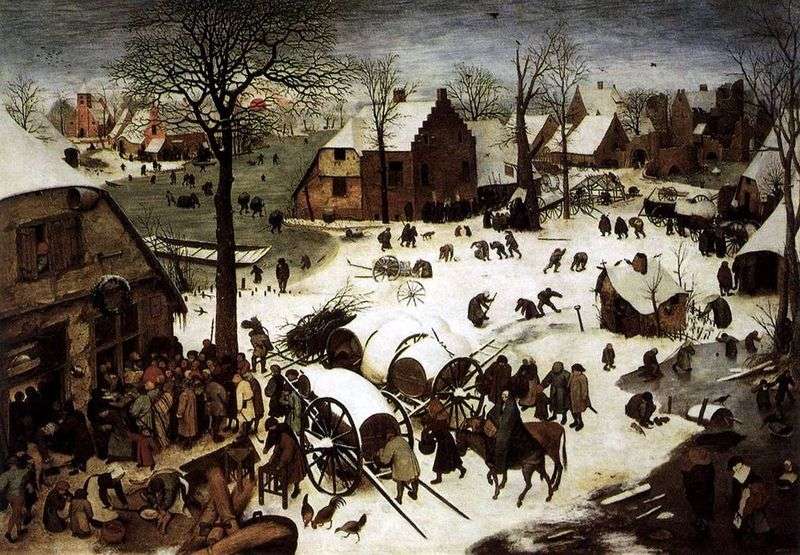
Created in the wake of the “Times of the Year”, in 1566, the painting “Census in Bethlehem” on a well-known biblical story, meant the birth of art, whose main theme is the life of the people not in its timeless, as if universal aspect, but in the social and concrete social plan.
All the paintings of Peter Bruegel of this period of creativity are impressed by the consciousness of the authenticity of what is happening, and the gospel story, in essence, serves only as a disguise. Evangelists agree that the birthplace of Jesus is Bethlehem. They had to point out precisely this city, because it is called the Old Testament prophets by that city from which the Messiah will appear. According to Luke, Joseph and Mary, before they gave birth, lived in Nazareth. To explain how Mary, who was about to give birth, was in Bethlehem, Luke refers to the census undertaken by the decree of the Roman Emperor Augustus. The fact is that every Jew, in order to register, had to return to his hometown. Bethlehem was the city of David, and Joseph came from the lineage of David.
Actually, in the picture of Peter Brueghel the Elder, the participation in the census of Joseph and Mary is represented quite symbolically. The picture “The Census in Bethlehem” is a vivid example of how old masters often used evangelical texts, adapting them to the realities of their time. For Bruegel, this episode of evangelical history was the occasion to show the arbitrariness, which was repaired in the villages of the Netherlands by the holders of power. The symbol of this power is the coat of arms of the Habsburgs, to which belonged the ruler of the Netherlands, Philip II of Spain. The coat of arms of this kind Bruegel placed on the wall of the house, under the roof of which there is a census.
The originality of the interpretation of this evangelical plot by Bruegel, like others in his paintings, is that the Holy Family completely dissolved among the crowd that appeared at the census. This interpretation of the main characters and the main action of this or that gospel story is characteristic of Brueghel.
In his painting, the artist paints the life of the Dutch village of that time, and only one detail deciphers this picture as the gospel story – the donkey on which Maria travels, in itself an unremarkable one, and the ox – animals, which, according to the story of Proto-Gospel of Jacob, should be present in Christmas. Without these details, the picture of Brueghel could be considered simply a genre scene. Joseph, this secondary figure of the Gospel history, unlike Maria, shown full-face, is depicted from the back, and so that a large hat with wide margins completely covers his face.
But that there was no doubt that it was Joseph Plotnik, the husband of Mary, Brueghel gives him in his hands a professional tool – saw, the traditional attribute of Joseph. Bruegel, with his interpretation of this plot, as in other cases, as it were: Christ is here and now, He is among us, but we do not see Him, while He is outside, not inside us.
The fact that the artist Peter Bruegel, perhaps the first religious and historical and at the same time household paintings on the contemporary author, the plot and the emergence of not only life-specific and domestic, but also social, social moments is due to the historical events of those years: the time of the creation of these works – the time of the beginning the Netherlands revolution, the beginning of the active struggle of the Netherlands against Spanish feudalism and Catholicism. Beginning in 1566, Brueghel’s work develops in the most direct connection with these events.
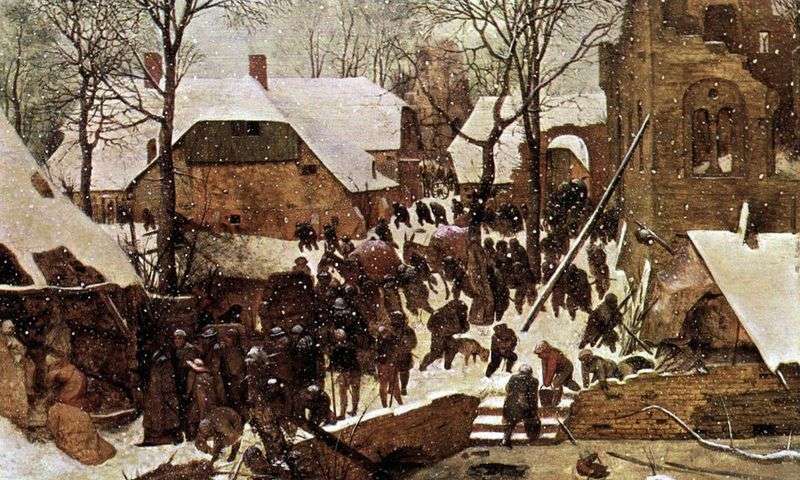 The Adoration of the Magi in the Winter Landscape by Peter Brueghel
The Adoration of the Magi in the Winter Landscape by Peter Brueghel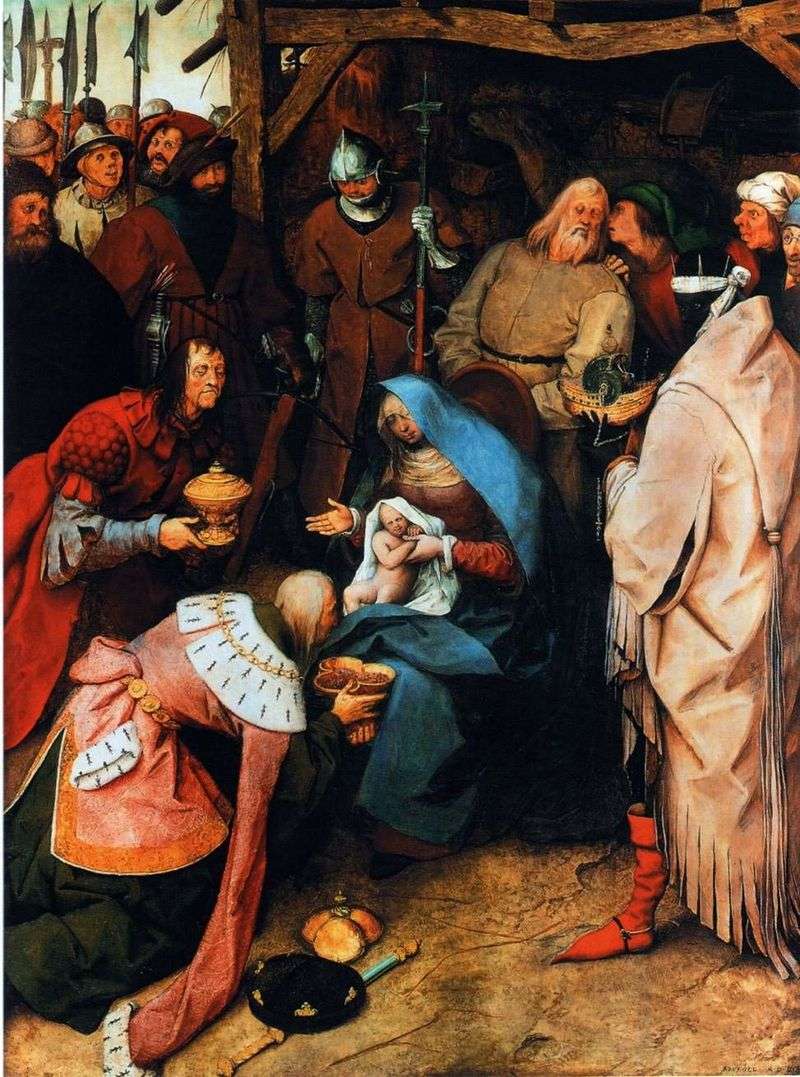 Adoration of the Magi by Peter Brueghel
Adoration of the Magi by Peter Brueghel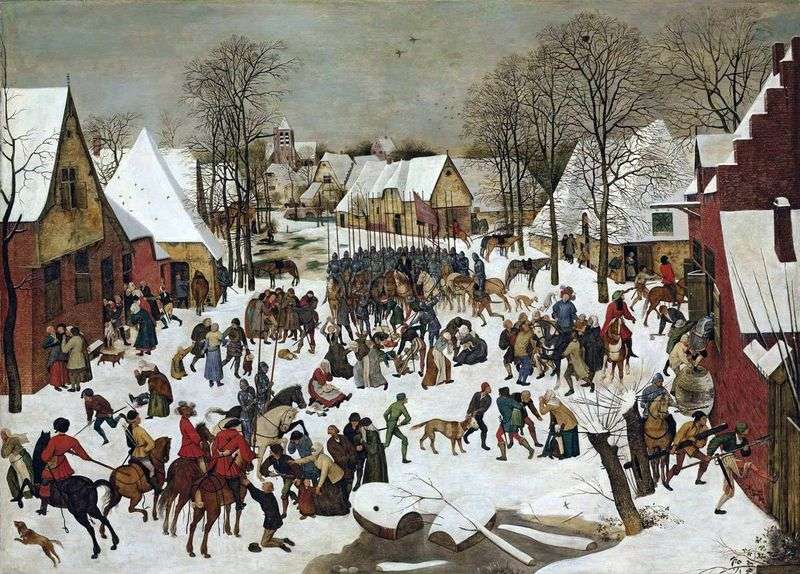 Beating babies in Bethlehem by Peter Brueghel
Beating babies in Bethlehem by Peter Brueghel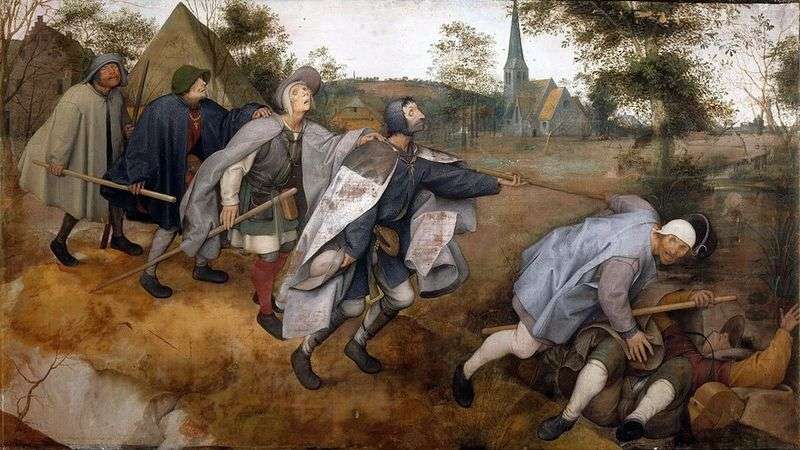 The Parable of the Blind by Peter Brueghel
The Parable of the Blind by Peter Brueghel The Parable of the Sower by Peter Brueghel
The Parable of the Sower by Peter Brueghel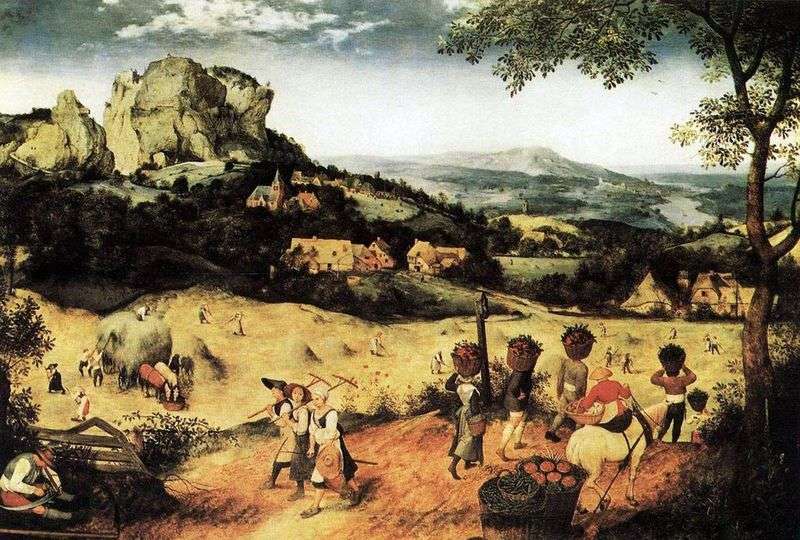 Haymaking by Peter Brueghel
Haymaking by Peter Brueghel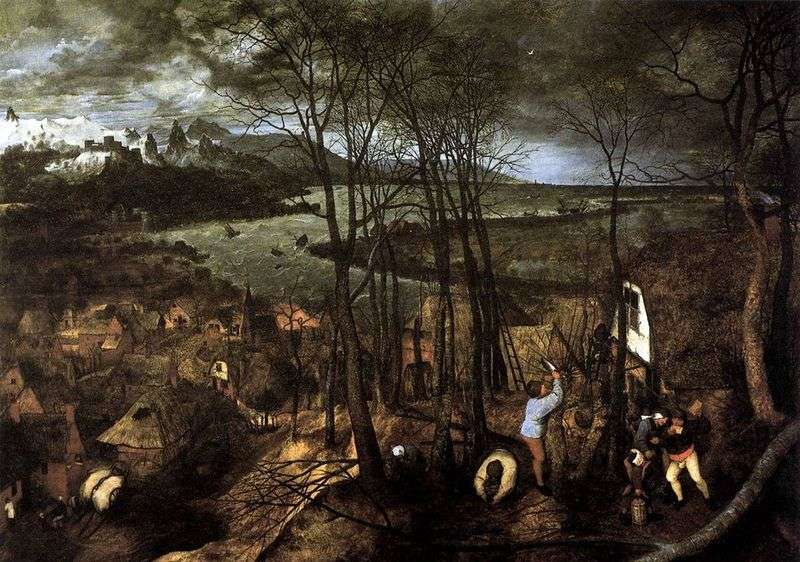 A gloomy day. Cycle of the Seasons by Peter Brueghel
A gloomy day. Cycle of the Seasons by Peter Brueghel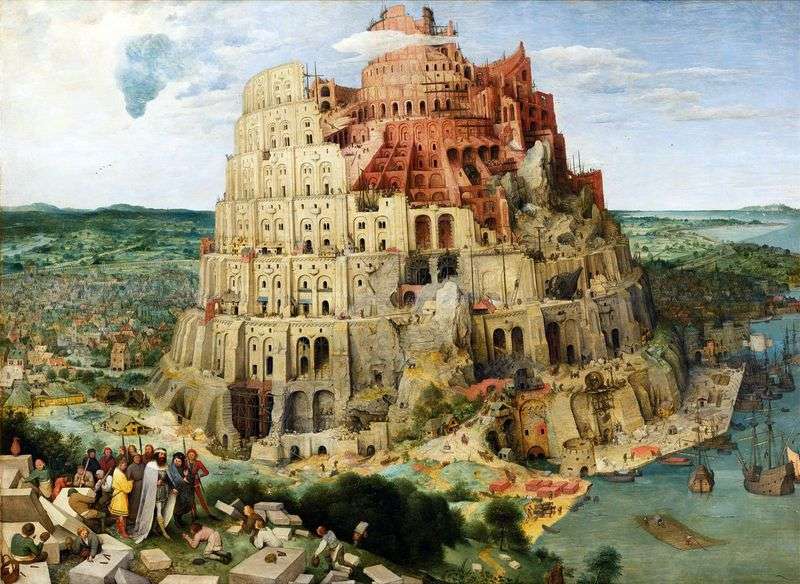 The Tower of Babel by Peter Brueghel
The Tower of Babel by Peter Brueghel